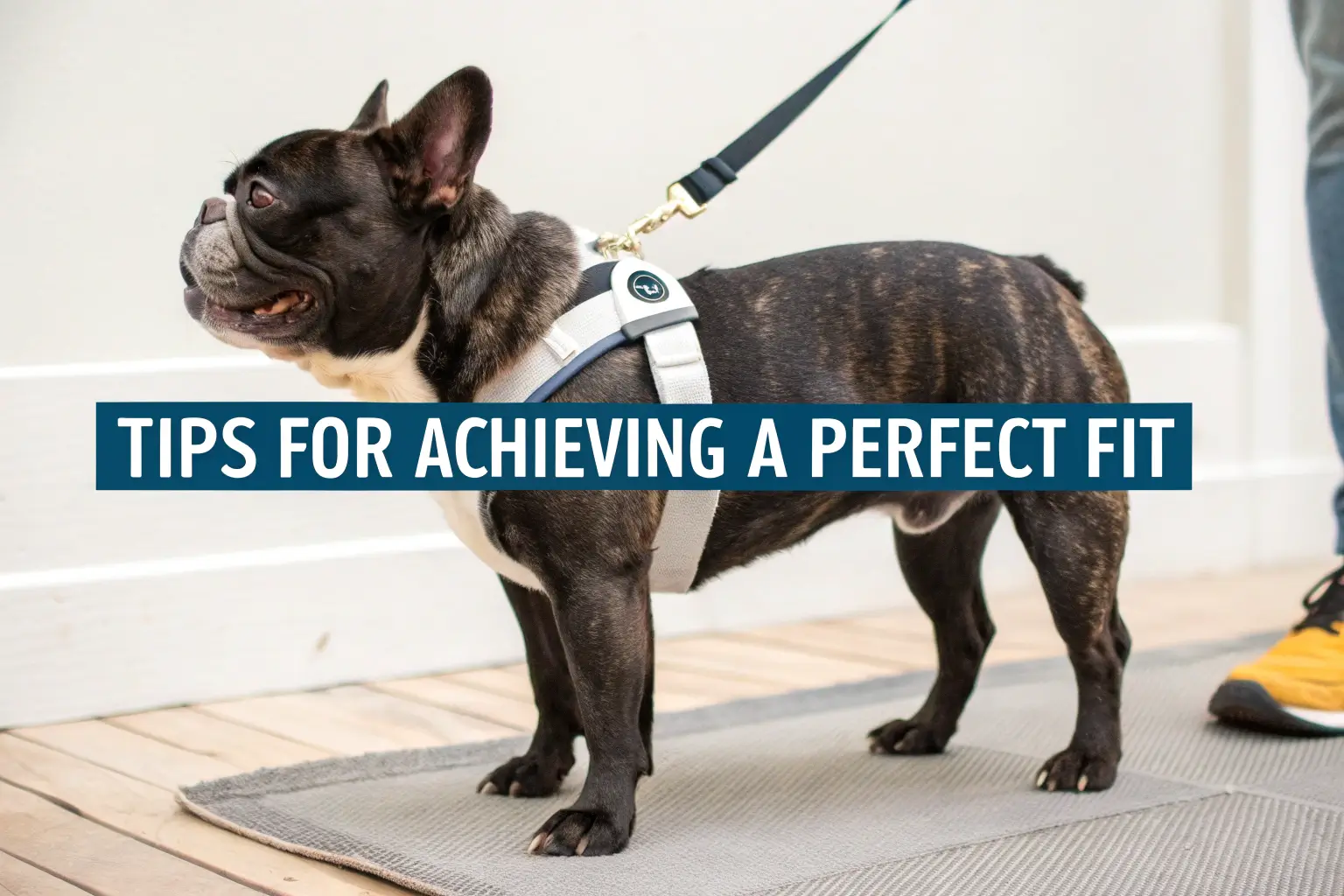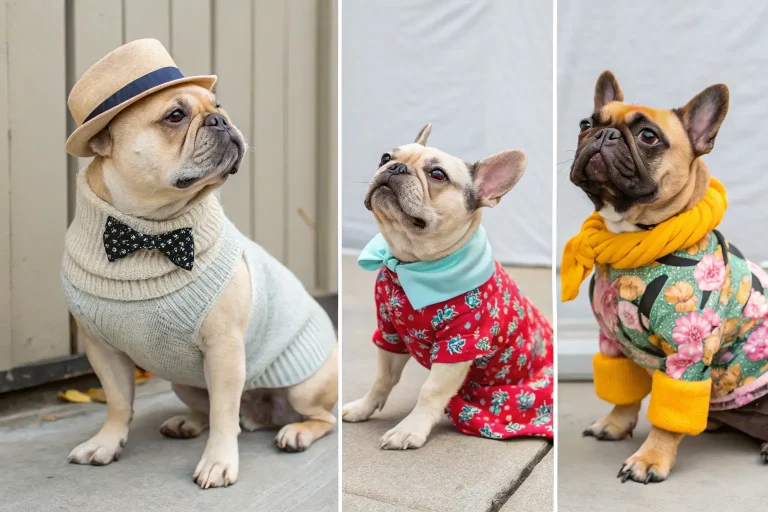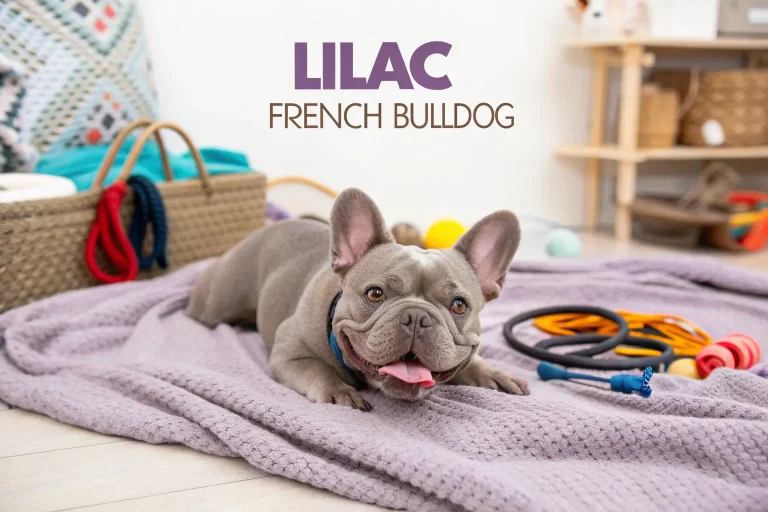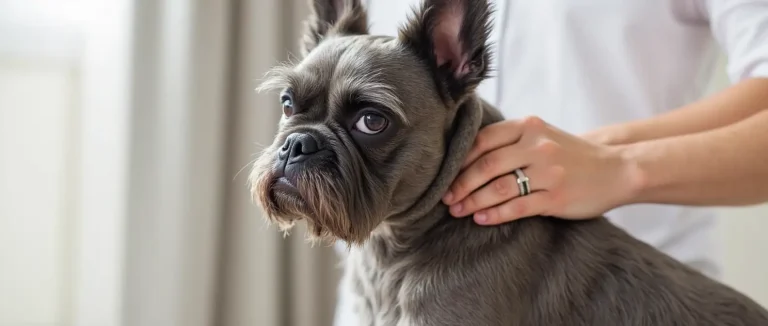French Bulldog Harness Guide: 7 Tips for a Perfect Fit!
Introduction
French Bulldogs—those adorable, bat-eared companions with smushed faces and big personalities—have skyrocketed in popularity over the past decade. Any Frenchie parent knows these sturdy little bulldogs require special consideration when it comes to walking gear. A proper french bulldog harness isn’t just an accessory; it’s essential for their comfort, safety, and respiratory health.
Unlike their larger bulldog cousins, Frenchies have unique physiques—compact bodies, broad chests, and those signature brachycephalic (flat-faced) features that make them prone to breathing difficulties. This is precisely why finding the perfect french bulldog harness matters so much. Standard collars can trigger dangerous pressure on their windpipes, while ill-fitting harnesses might chafe their sensitive skin or restrict movement.
Did you know that French Bulldogs are physically incapable of swimming due to their top-heavy bodies? This anatomical quirk is just one example of why specialized equipment matters for these special pups. Let’s dive into everything you need to know about selecting, fitting, and using the ideal harness for your flat-faced friend.
Understanding French Bulldog Anatomy
Scientific Classification
The French Bulldog (Canis lupus familiaris) belongs to the Canidae family and is classified as a companion dog breed. They’re descendants of English Bulldogs that were bred with smaller local ratters in France during the 1800s.
Physical Characteristics
An adult Frenchie typically weighs between 16-28 pounds and stands 11-12 inches tall at the shoulder. Their most distinctive features include their “bat ears,” compact muscular build, and significantly shortened snouts. These physical traits directly impact harness needs.
French Bulldogs feature broad chests, narrow waists, short necks, and sensitive skin—all factors that make standard harnesses potentially problematic. Their short snouts also make them brachycephalic, meaning they’re prone to respiratory issues when under strain or stress.
Breed-Specific Harness Needs
No two dog breeds are identical in structure, but Frenchies are particularly unique. Their barrel-chested, top-heavy build means they need harnesses that:
- Distribute pressure evenly across the chest (not the throat)
- Have adjustable straps to accommodate their distinctive shape
- Provide control without restricting their already-compromised breathing
- Feature padding in areas prone to chafing
Types of French Bulldog Harnesses
Choosing the right french bulldog harness starts with understanding the main options available:
Step-In Harnesses
Pros: Easy to put on squirmy dogs; distributes pressure evenly across the chest
Cons: Sometimes less secure for strong pullers
Best for: Frenchies who hate things going over their heads
Step-in harnesses lie flat on the ground while your Frenchie literally steps into leg holes, then you clip them securely on top. Many Frenchie owners prefer these because they avoid putting pressure on sensitive throat areas.
Y-Shaped Harnesses
Pros: Excellent freedom of movement; doesn’t restrict shoulders
Cons: Can be tricky to adjust correctly the first time
Best for: Active Frenchies who need full range of motion
The Y-shape design follows your dog’s natural structure, with straps that create a Y-formation across the chest. These harnesses avoid restricting shoulder movement—critical for active Frenchies who love to play.
Vest-Style Harnesses
Pros: Maximum support; difficult for dogs to slip out of
Cons: Can be warm in hot weather; may be bulkier
Best for: Escape artists or dogs who need extra support
Resembling a small vest, these harnesses offer maximum coverage and support across the chest and back. They’re particularly good for Frenchies who’ve mastered the art of backing out of traditional harnesses.
No-Pull Harnesses
Pros: Discourages pulling without choking; front clip offers more control
Cons: Requires training to be effective; some restrict natural movement
Best for: Frenchies who pull excessively on walks
These specialized harnesses typically have a front attachment point that redirects your dog when they pull. While effective, remember that no harness replaces proper leash training.
7 Essential Tips for the Perfect French Bulldog Harness Fit
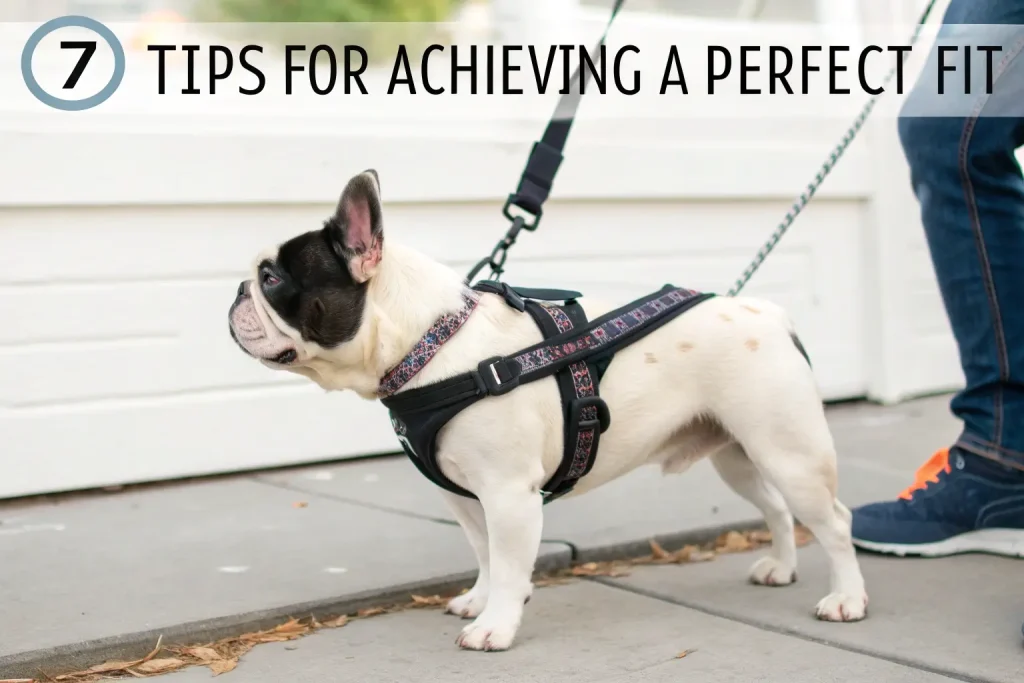
1. Measure Twice, Order Once
The foundation of finding the perfect french bulldog harness starts with accurate measurements. Grab a soft measuring tape and record these key dimensions:
- Chest girth: Measure the widest part of your Frenchie’s chest, usually just behind the front legs
- Neck girth: Measure around the base of the neck where a collar would naturally sit
- Length: Measure from the base of the neck to the start of the tail
Pro tip: Add two fingers’ width to measurements for comfort. Remember that Frenchies often have larger chest-to-neck ratios than other breeds, so don’t assume standard sizing charts will work!
2. Prioritize Breathability and Cooling
Frenchies are notoriously heat-sensitive due to their brachycephalic nature. When selecting a french bulldog harness, look for:
- Lightweight, breathable materials like air mesh
- Designs that avoid covering large portions of their body
- Light-colored materials that won’t absorb as much heat
- Minimal padding in areas that trap heat (though padding is good in potential chafing zones)
During summer months, some owners keep their harnesses in the refrigerator briefly before walks or use cooling vests designed specifically for brachycephalic breeds.
3. Check for Proper Adjustment Points
The most common mistake in french bulldog harness fitting is insufficient adjustability. Their unique body shape demands multiple adjustment points:
- Look for harnesses with at least 3-4 different straps that adjust independently
- Ensure chest and neck areas can be sized separately
- Check that adjustment mechanisms lock securely and won’t loosen during walks
- Verify that hardware is sturdy enough to handle occasional pulling
Remember: a properly adjusted harness should allow you to fit two fingers between the harness and your dog’s body at any point.
4. Focus on Chafe-Free Design
French Bulldogs have sensitive skin prone to irritation, especially in their “armpit” regions and where their legs meet their body. The ideal french bulldog harness should feature:
- Soft, padded edges (no raw seams that might rub)
- Neoprene or fleece-lined contact points
- No-chafe designs under the legs and around neck area
- Smooth buckles that sit away from skin contact points
After walks, check your Frenchie’s skin for any red marks, especially under the legs and around the shoulders. These indicate fitting issues that need addressing.
5. Choose Appropriate Hardware and Attachments
The devil’s in the details when it comes to harness hardware:
- Leash attachment: D-rings should be metal (not plastic) and securely sewn
- Buckles: Quick-release mechanisms make life easier but ensure they’re sturdy
- Reflective elements: Critical for visibility during evening walks
- Handle: An optional top handle provides extra control in emergency situations
For Frenchies who pull, consider dual-clip harnesses with both front and back attachment options. Front clips discourage pulling while back clips are safer for casual walking.
6. Test Indoor Before Outdoor Adventures
Before heading out on a full walk with a new french bulldog harness, conduct an indoor test run:
- Let your Frenchie wear the harness for 5-10 minutes indoors
- Check for any signs of discomfort, restriction, or irritation
- Ensure they can move, sit, lie down, and play normally
- Verify that the harness stays in place during normal movement
- Make adjustments as needed before venturing outdoors
Many Frenchie owners report that their dogs need an adjustment period with new harnesses. Positive reinforcement (treats and praise) can help create positive associations.
7. Maintain and Regularly Reassess Fit
A french bulldog harness isn’t a “set and forget” purchase:
- Clean regularly according to manufacturer instructions (build-up of dirt can cause irritation)
- Check straps for fraying or signs of wear, especially after rough play
- Reassess fit every few months, as weight changes can affect proper sizing
- Adjust seasonally—looser in summer when fur is shorter, slightly tighter in winter
Remember that Frenchies, particularly puppies, can change shape dramatically in short periods. A harness that fit perfectly in January might be too tight by April.
Addressing Common French Bulldog Harness Problems
The Escape Artist
If your Frenchie is a regular Houdini, you’re not alone. Their compact, muscular build makes them adept at backing out of improperly fitted harnesses. Solutions include:
- Martingale-style harnesses with limited tightening capability
- Full-vest designs with multiple securing points
- Harnesses specifically marketed as “escape-proof”
- Double-securing with both harness and a properly fitted collar as backup
Never compromise on proper fit to prevent escapes—a too-tight harness causes discomfort and potential health issues.
The Persistent Puller
Pulling on leash is common in Frenchies, but their respiratory challenges make it particularly problematic. Consider:
- Front-clip harnesses that naturally redirect pulling behavior
- Wider chest pieces that distribute pressure evenly
- Consistent training using positive reinforcement methods
- Harnesses with gentle guidance features rather than restrictive ones
Remember that no french bulldog harness completely solves pulling without training. The right equipment simply makes training safer and more effective.
Skin Irritation and Hot Spots
Frenchies’ skin folds and sensitive skin make them prone to irritation. If your dog develops redness, rashes, or hot spots:
- Switch to a hypoallergenic harness material
- Consider lined harnesses with fleece or soft fabric
- Ensure complete dryness before putting on the harness
- Apply pet-safe powder to trouble spots before walks (consult your vet first)
Some Frenchie owners keep multiple harnesses in rotation to prevent continuous pressure on the same areas.
Best French Bulldog Harness Features By Activity
For Everyday Walks
The ideal daily french bulldog harness balances comfort with practical features:
- Lightweight, breathable materials
- Easy to clean (machine-washable preferable)
- Reflective stitching for visibility
- Back-clip design for relaxed walking
For Training Sessions
Training-specific needs include:
- Front and back clip options
- Handle for quick control or guidance
- Secure fit that limits backing out
- Comfortable design for longer wearing periods
For Car Travel
Safety first for vehicle transportation:
- Crash-tested certification
- Integration with vehicle seatbelt systems
- Secure, escape-proof design
- Comfortable enough for extended wearing
For Special Needs Frenchies
Some Frenchies require adaptive equipment:
- Support harnesses for seniors or those with mobility issues
- Extra padding for dogs recovering from surgery
- Ultra-lightweight options for Frenchies with severe breathing issues
- Custom-fitted solutions for dogs with physical abnormalities
Conclusion
Finding the perfect french bulldog harness isn’t just about style or convenience—it’s about safeguarding your four-legged family member’s health and comfort. These unique little dogs have specific needs that standard dog equipment often fails to address.
By following our seven fit tips and understanding the anatomical considerations behind them, you’ll ensure your Frenchie stays comfortable, secure, and breathing freely during all your adventures together.
Remember that even the most perfectly designed french bulldog harness needs proper introduction and adjustment. Take your time, observe your dog’s comfort levels, and don’t hesitate to try different styles until you find “the one.” Your Frenchie’s wagging tail and happy prancing will tell you when you’ve nailed it.
Looking to share your own french bulldog harness success stories or still have questions? Drop a comment below—our community of Frenchie enthusiasts is always happy to help!
Frequently Asked Questions
How tight should a French Bulldog harness be?
A properly fitted french bulldog harness should allow you to slip two fingers between the harness and your dog’s body at any point. It should be snug enough that your Frenchie can’t back out of it, but loose enough that it doesn’t restrict movement or breathing. Pay special attention to the chest strap—too tight can restrict their already-challenged breathing.
Can French Bulldogs wear regular dog harnesses?
While French Bulldogs can technically wear standard harnesses, they often don’t fit properly due to Frenchies’ unique body proportions. Their broad chests, narrow waists, and short necks typically require harnesses with multiple adjustment points. Breed-specific or highly adjustable harnesses generally provide better comfort and security.
How long can a French Bulldog wear a harness?
A properly fitted french bulldog harness can be worn for the duration of walks and brief outings, but shouldn’t be left on indefinitely. Remove the harness when returning home to prevent skin irritation, particularly in skin fold areas. During hot weather, limit harness-wearing time to prevent overheating, as Frenchies already struggle with temperature regulation.
Are collars or harnesses better for French Bulldogs?
Harnesses are strongly preferred over collars for French Bulldogs due to their brachycephalic (flat-faced) anatomy. Collars can put pressure on their trachea, exacerbating breathing problems, especially when pulling. A properly fitted french bulldog harness distributes pressure across the chest instead of the throat, making it the safer choice for this breed.
At what age can I start putting a harness on my French Bulldog puppy?
You can introduce a properly sized puppy harness as early as 8-10 weeks old. Start with short, positive wearing sessions indoors before attaching a leash. Use a lightweight, simple design initially, and upgrade to more structured harnesses as your puppy grows. Remember to check the fit frequently, as Frenchie puppies grow quickly and can outgrow a harness in just a few weeks.

